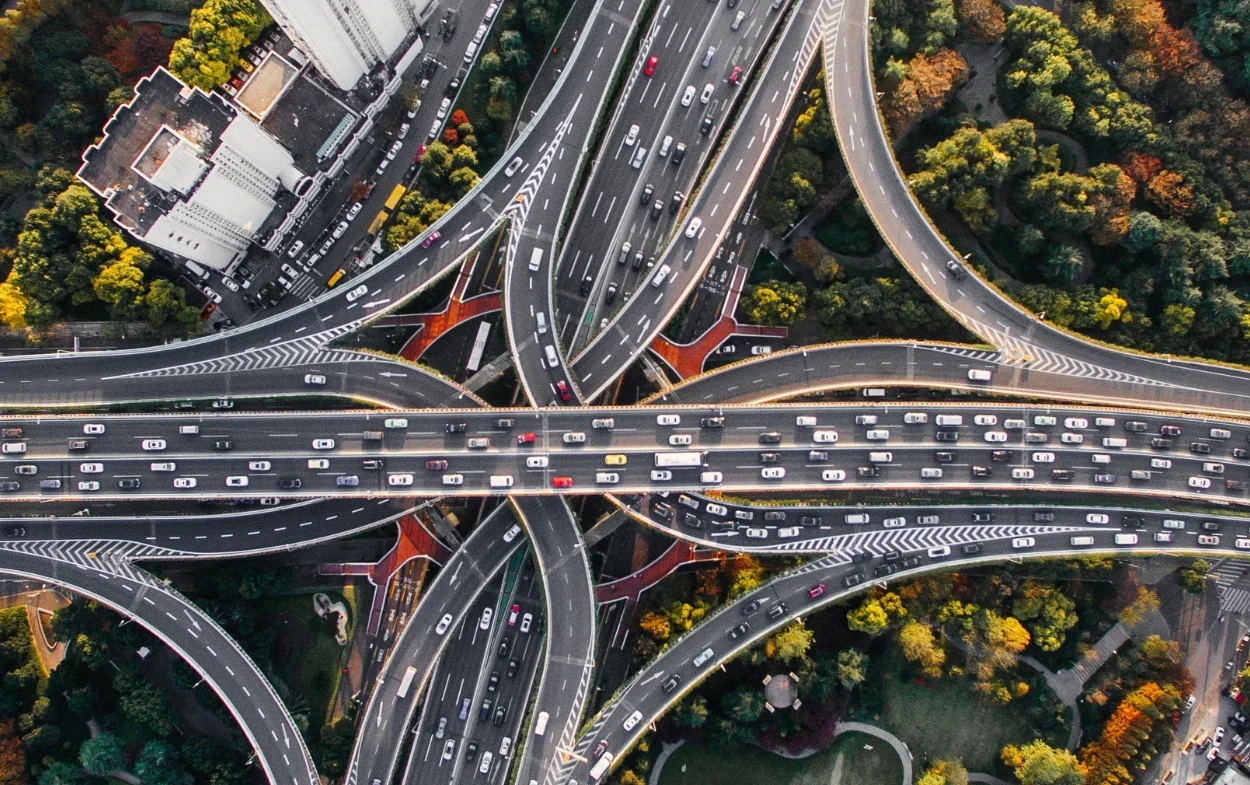In the ever-evolving landscape of urban mobility, adjusting to heavy highway traffic in 2025 is no small feat. With cities sprawling, vehicles multiplying, and traffic congestion reaching unprecedented levels, the need for smart driving tips has never been more glaring.
Why Traffic Management Matters in 2025
The reality is that many highways are now grappling with volumes far beyond their intended capacity. Urban expansion coupled with rising car ownership means roads are increasingly burdened. It’s become a new normal characterized by:
Frequent gridlocks on major routes
Accidents stemming from the overwhelming number of vehicles
Mental exhaustion arising from constant stop-and-go driving
Fuel wastage while idling in lengthy traffic jams
To escape the clutches of heavy traffic, the first step is knowing exactly where to steer clear of.
The Busiest Roads You Should Avoid in 2025
A handful of highways have earned a notorious reputation for their traffic volumes. Here are the top five that you’ll want to avoid whenever possible:
1. Highway 401, Toronto, Canada
As the busiest highway in North America, Highway 401 averages over 500,000 vehicles daily, particularly slowing down between Mississauga and Toronto during peak hours.
2. Interstate 405, Los Angeles, USA
With an infamous status among locals, the 405 is synonymous with brutality when it comes to traffic. Congestion is an ever-present companion whether near LAX or traveling through West LA, making alternate routes a wiser choice when time is of the essence.
3. Chuo Expressway, Tokyo, Japan
This key artery of Tokyo connects bustling business districts, residential areas, and shipping zones. Often, it’s so jammed that it runs at a slower pace than many footpaths.
4. Highway A100, Berlin, Germany
A central thoroughfare favored by both commuters and commercial drivers, this urban route is one of Europe’s worst when it comes to peak hour congestion.
5. M25 Motorway, London, UK
Dubbed “the London car prison,” the M25 is notorious for bringing traffic to a standstill during both morning and evening rush hours.
The Underlying Causes of Traffic Congestion
Ever wondered why some roads seem perpetually bogged down? The reasons are often multi-faceted:
Urban Growth: As more people flock to cities, vehicle volumes skyrocket while roads largely remain unchanged, resulting in chronic congestion.
Economic Activity: Areas surrounding airports, ports, and business districts face double the traffic as businesses, customers, and freight traffic all converge.
Outdated Infrastructure: Many highways were built decades ago and are simply not equipped to handle today’s traffic volumes.
Rush Hour Traffic: Traffic bottlenecks typically plague major cities during 7 AM to 9 AM and 4 PM to 7 PM, creating predictable peaks of chaos.
Strategies to Outsmart Traffic in 2025
Time to explore some strategies. With a bit of prep and the right technology, dodging traffic can become second nature.
Leverage Live Traffic Apps: Modern applications like Google Maps and Waze have become smarter, providing real-time updates and dynamic rerouting. Make it a habit to check them prior to hitting the road.
Travel at Off-Peak Hours: Flexibility is key. If possible, shift your departure time away from peak hours. Even adjusting your schedule by 20 minutes can significantly alleviate some of that looming traffic stress.
Avoid Event Areas: Always be in the know about concerts, marathons, or sports events in your vicinity. These gatherings can turn usually straightforward routes into traffic jungles.
Consider Public Transport: Sometimes, steering clear of heavily trafficked roads entirely is the best policy. Utilizing trains or subways not only reduces vehicular congestion but also gives you a break from the wheel.
Best Practices for a Calm Commute
Here’s a handy checklist to ensure your driving experience in 2025 remains smooth sailing:
Regularly check live traffic updates before departure.
Pre-plan alternate routes based on potential congestion.
Leave ahead of schedule for important trips.
Whenever feasible, avoid notorious traffic highways.
Use parking apps to locate available spaces nearby.
UKK
What times are ideal to sidestep the worst traffic?
Avoiding the roads before 7 AM or after 8 PM should help you miss the majority of traffic snarls in most urban areas.
Can navigation apps genuinely help with traffic avoidance?
Ehdottomasti! Esimerkiksi Google Mapsin ja Wazen kaltaiset sovellukset kokoavat reaaliaikaista liikennetietoa ohjatakseen sinua paremmin, mikä tekee niistä korvaamattomia odottamattomien ruuhkien välttämisessä.
Onko kimppakyyti parempi vaihtoehto kuin yksin ajaminen?
Kimppakyyti ei ainoastaan helpota stressiä, vaan se voi myös säästää polttoainetta. Joissakin paikoissa yhteiskuljetuksilla voi jopa olla pääsy nopeammille kaistoille, mikä nopeuttaa matkaasi.
Vaikuttaako sää liikenteen sujuvuuteen?
Ehdottomasti. Huonot sääolosuhteet, kuten rankkasade, lumi tai sumu, voivat hidastaa liikennettä merkittävästi ja lisätä riskejä teillä.
Lopulliset ajatukset
Liikenteen maisema on muuttunut huomattavasti vuoteen 2025 mennessä, ja niin pitäisi ajostrategioidesi. Vaikka liikennemääriin ei voi vaikuttaa, valmius on täysin omissa käsissäsi. Tietämys on valtaa; pysy ajan tasalla ja ennakoi haasteita. Loppujen lopuksi aikaasi ei pitäisi tuhlata puskurissa kiinni olevassa liikenteessä!
Kun pyrit parantamaan logistiikkatoimintojesi tehokkuutta, harkitse, kuinka GetTransport.comin kaltaiset alustat voivat auttaa sinua navigoimaan kuljetustarpeissasi saumattomasti. Tarjoamalla kilpailukykyisen hinnoittelun ja laajan valikoiman palveluita – rahtitoimituksista kotimuuttoihin – GetTransport.com on logistiikan yksinkertaistamisen eturintamassa maailmanlaajuisesti. Tutustu, kuinka helppoa on järjestää kuljetuksesi edullisuus ja luotettavuus sydämessä. Varaa kyytisi osoitteessa GetTransport.com.

 Älykkään ajamisen taito välttää raskasta liikennettä vuonna 2025">
Älykkään ajamisen taito välttää raskasta liikennettä vuonna 2025">